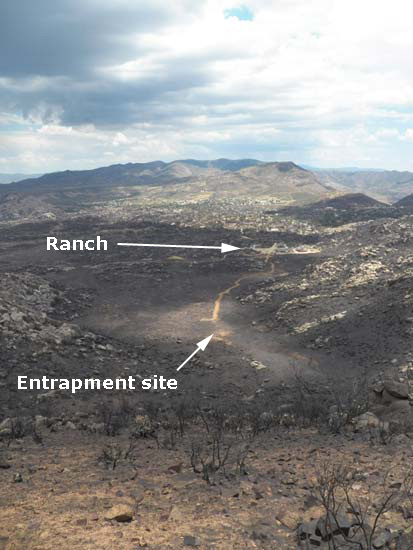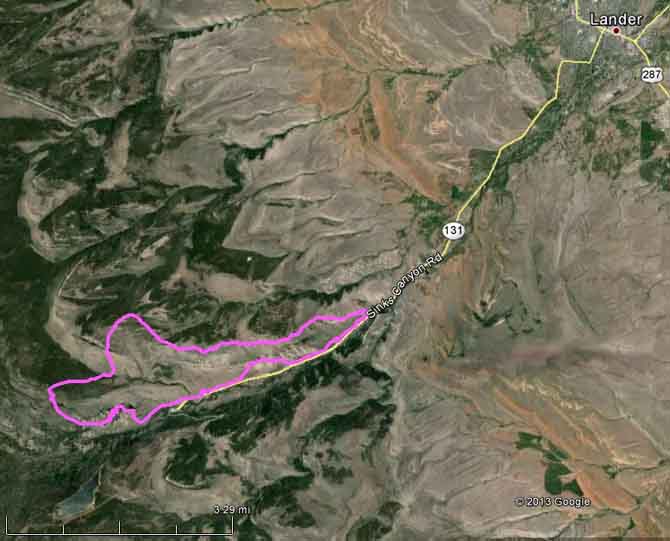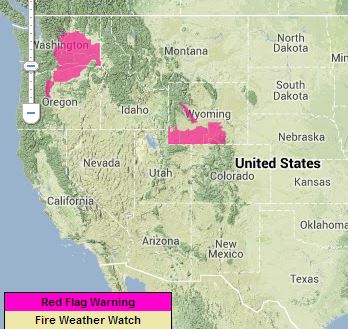
Prescott Fire Department Division Chief Darrell Willis on Tuesday escorted members of the media to the site on the Yarnell Hill fire where 19 members of the Granite Mountain Hotshots were killed June 30. John Dougherty, an investigative reporter who has written for the New York Times, was there and recorded these videos of Chief Willis’ briefing. They are embedded here with his permission. John also wrote an article about his visit to the site.
The first video is the Chief providing his understanding of what happened, and in the second he takes questions from the reporters.
In the photo below of the entrapment site, which is looking toward the west, the road was punched in by a dozer after the incident to facilitate the removal of the bodies, which were at the end of the road. The photo was taken by Wade Ward of the Prescott FD, and is used here with permission.
Continue reading “Prescott Division Chief provides more information about fatalities at Yarnell Hill Fire”








